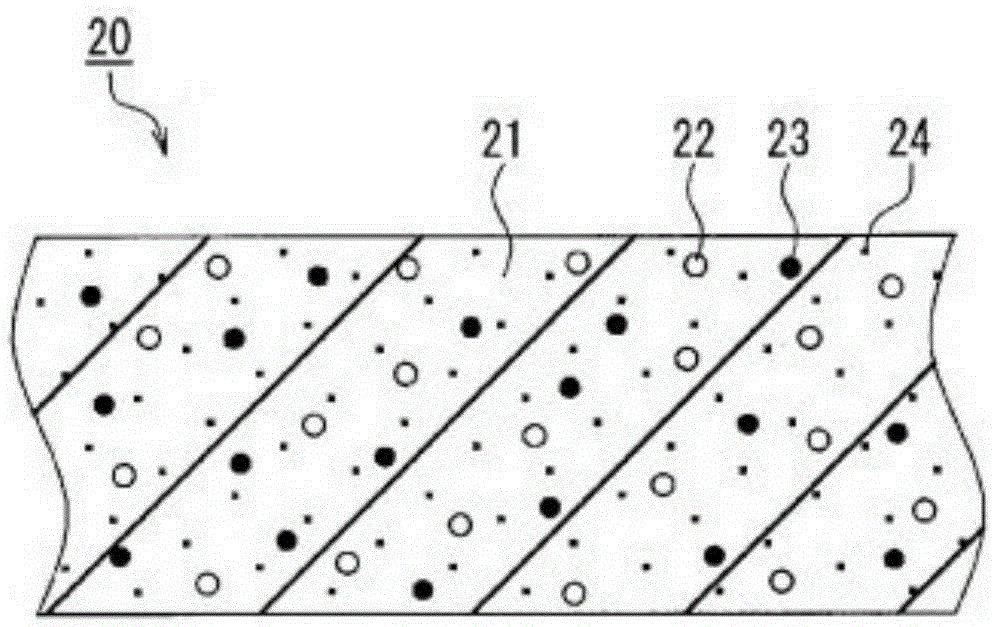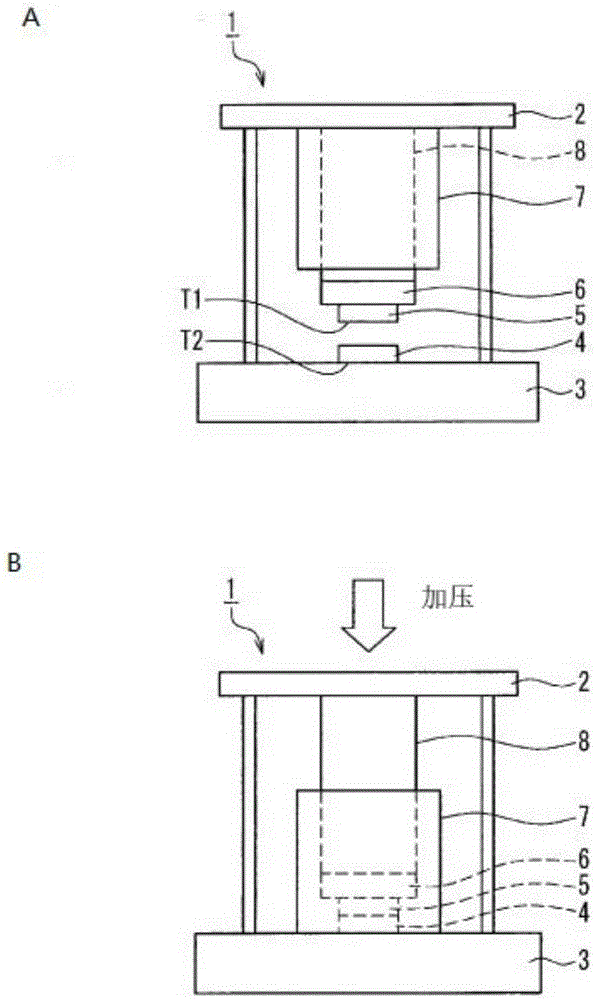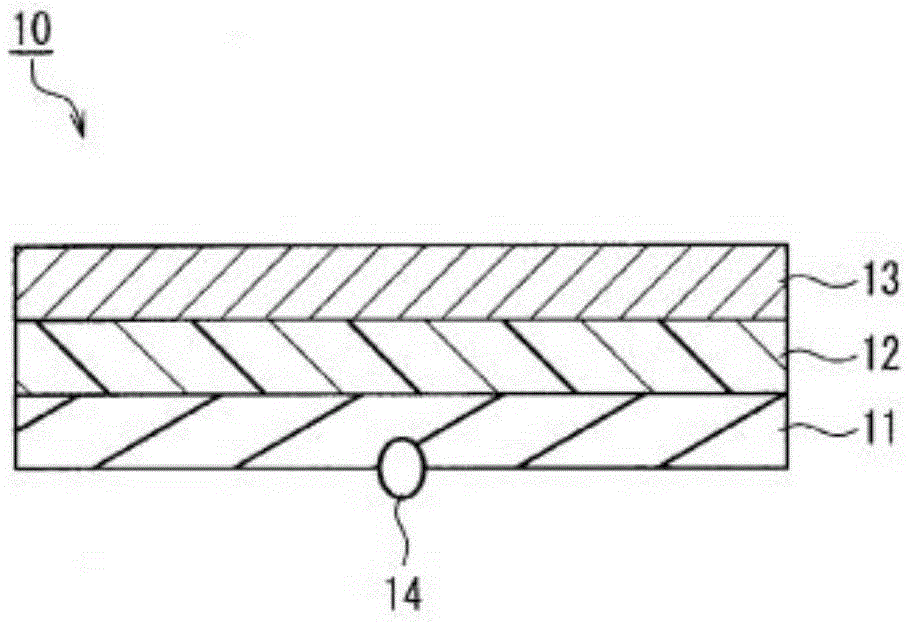Heat-storage composition
A composition and heat storage technology, applied in the direction of heat exchange materials, electrical components, circuits, etc., can solve problems such as easy damage, and achieve uniform heat release, high heat storage effect, heat storage and high thermal conductivity.
- Summary
- Abstract
- Description
- Claims
- Application Information
AI Technical Summary
Problems solved by technology
Method used
Image
Examples
Embodiment 1
[0094] 1. Material composition
[0095] (1) Silicone ingredients
[0096] As the silicone component, a two-component room temperature curing silicone rubber was used. In addition, a base polymer component (component A), a crosslinking component (component B), and a platinum-based metal catalyst (component C) are added in advance to the two-liquid RTV. The above-mentioned two-component RTV is a two-component type room temperature vulcanization (Room Temperature Vulcanizing).
[0097] (2) Thermal storage inorganic particles
[0098] Vanadium dioxide particles (VO2) with an average particle diameter of 20 μm were added in a ratio of 400 parts by weight (46 volume %) per 100 parts by weight of the silicone component. 2 ) and mix evenly. Vanadium dioxide particles (VO 2 ) The latent heat generated by the electronic phase transition is 245J / cc.
[0099] 2. Sheet forming processing method
[0100] A metal frame with a thickness of 3 mm was placed on the polyester film subjecte...
Embodiment 2
[0103] 1. Material composition
[0104] (1) Silicone ingredients
[0105] As the silicone component, a two-component room temperature curing silicone rubber was used. In addition, a base polymer component (component A), a crosslinking component (component B), and a platinum-based metal catalyst (component C) are added in advance to the two-liquid RTV.
[0106] (2) Thermal storage inorganic particles
[0107] Vanadium dioxide particles (VO 2 ) and mix evenly.
[0108] (3) Thermally conductive particles
[0109] (a) Small-diameter thermally conductive particles
[0110] The small-diameter thermally conductive particles were used by surface-treating alumina with an average particle diameter of 1 μm with a silane coupling agent. The added amount was set to 100 parts by weight with respect to 100 parts by weight of the silicone component.
[0111] (b) Medium-sized thermally conductive particles
[0112] The medium-diameter heat conductive particles were used by surface-trea...
Embodiment 3、 comparative example 2~3
[0135] Each composition is shown in Table 2. The surface treatment of the thermally conductive particles in Example 3 was the same as in Example 2, and the addition amount was 200 parts by weight of small-diameter thermally conductive particles, 425 parts by weight of medium-sized thermally conductive particles, and large 1000 parts by weight of heat conductive particles with a particle diameter, 1625 parts by weight in total. Except for this, it experimented similarly to Example 2.
PUM
| Property | Measurement | Unit |
|---|---|---|
| particle size | aaaaa | aaaaa |
| particle size | aaaaa | aaaaa |
| particle size | aaaaa | aaaaa |
Abstract
Description
Claims
Application Information
 Login to View More
Login to View More - R&D
- Intellectual Property
- Life Sciences
- Materials
- Tech Scout
- Unparalleled Data Quality
- Higher Quality Content
- 60% Fewer Hallucinations
Browse by: Latest US Patents, China's latest patents, Technical Efficacy Thesaurus, Application Domain, Technology Topic, Popular Technical Reports.
© 2025 PatSnap. All rights reserved.Legal|Privacy policy|Modern Slavery Act Transparency Statement|Sitemap|About US| Contact US: help@patsnap.com



